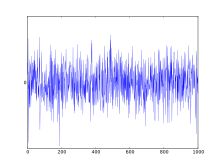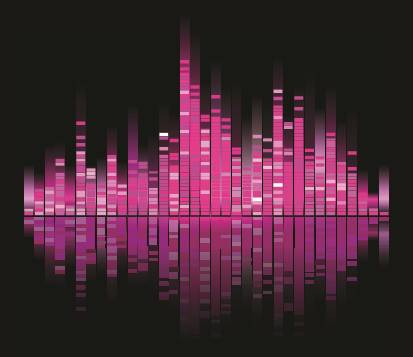Here’s a question we get everyday: White noise vs pink noise – what’s the difference? Sound masking systems are often described as “white noise machines” or “pink noise speaker systems”, when in reality they are approximated as a blend of both. White noise is the same sound intensity at all frequencies, while pink noise decreases in intensity as the frequency goes up. This is a good thing, since high frequencies are often “hissy” to the human ear, and can cause discomfort or distraction over the course of the day.
If a Sound Masking system used just White Noise, the clients probably wouldn’t be happy with the end result.
White Noise and Pink Noise – See the Difference
Visually, you can see the difference between the curve on a white noise vs. pink noise graph. Pink noise is louder at low frequencies, and drops off at higher frequencies. White noise, on the other hand, is the same volume at all frequencies, which sounds hard and hissy to the human ear.

Figure 1: Pink Noise Spectrum – Used for Office Sound Masking Systems

Figure 2: White Noise Spectrum – Too Hissy at High Frequencies for Office Sound Masking
What is better for Sound Masking?
Advanced sound masking systems blend the white noise and pink spectra (but generally tend toward the pink noise) into a curve that has been empirically proven to best mask unwanted noise. The spectrum is adjusted in the field based on the thickness of the acoustic ceiling tiles, which blocks high frequencies more easily. Therefore, if there is no ACT (exposed ceiling), then a standard pink noise may be used. However, if there is 1″ thick ACT tiles, then the spectrum may evened out closer to the white noise so that it results in a pink noise below the tile after the high frequencies have been blocked upward.
See: Sound Masking Case Studies
White Noise Systems
White noise is simply a constant decibel volume at all frequencies. It may also be described as static noise. The downside, as we mentioned, is that it is considered hissy to the human ear. Humans are more sensitive to high pitch noises. These are known as “sones”, or essentially, the sensitivity level at various frequencies. A 50dB noise at 125 Hz (the frequency of a fog horn) would be much less annoying than a 50 dB whistle at 2000 Hz.
Listen for Yourself: The Difference between White Noise and Pink Noise:
- White Noise: https://www.youtube.com/watch?v=gMiBWQF-ryg
- Pink Noise: https://www.youtube.com/watch?v=ZXtimhT-ff4
How Loud Should White Noise Be in Sound Masking?
Generally, you want to the white noise to be just loud enough to cover up other, unwanted noises in your workspace or home. This ensures that it will not be so loud that it is distracting, but still loud enough that you can prevent distractions or annoyances from nearby noises. In the field, this usually equates to setting the white noise at 43-45 dBA in closed offices, and 45-48 dBA in open offices, although this can certainly change depending on the circumstances.
In areas where there is extreme noise complaints or issues, you can continue to turn up the speaker strength, however, the effectiveness drops off dramatically at 50 dBA, since the speakers become the source of complaint!
In Summary – White Noise vs Pink Noise
Overall, white noise and pink noise are both sound masking spectra used to cover up unwanted sounds. White noise is staticky, and is the same at all frequencies – high and low pitches. Meanwhile, pink noise drops off at high frequencies so that it does not annoy those in the space. Sound masking systems use a blend of these spectra based on the ceiling tile and other factors in the space to determine what is best while tuning and balancing the system.

